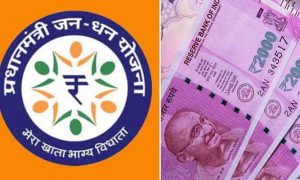Banks and fintechs have started offering personalised experiences, including custom metal credit and debit cards that can be tailored to an individual level
In recent years, digital payments and credit cards have experienced a surge in popularity. The acceptance of credit cards in India has increased, with an average of three credit card accounts per person, and credit card users spending now 21 times more than debit card users. A recent report indicates that on average, people have three different credit card accounts. And now Enter Metal, metal credit cards, have become increasingly popular due to their perceived status as a symbol of wealth and exclusivity. Amit Kakatikar, senior vice-president (financial institutions) of security tech provider IDEMIA, speaks on the metal cards market. Edited excerpts:
Read More: Godrej Locks Aims To Clock Rs 1,100 Crore Turnover This Fiscal
Banks and fintechs have started offering personalised experiences, including custom metal credit and debit cards that can be tailored to an individual level. Metal cards hold the potential to attract new customers, particularly from the Millennial and Gen-Z generations, due to their sturdiness and unique design, connotation of luxury and exclusivity, and the opportunity for customisation. Metal cards can enhance client engagement and retention, resulting in a significant increase in the number of clients for the bank or fintech.
Why would an individual wish to convert to metal cards? Are there any restrictions for users while switching to metal cards?
Metal cards are a strong, innovative, and highly appealing solution. They are perceived by users as a symbol of wealth and status, and their adoption by banks and other fintechs can lead to improved client engagement and retention. Metal cards are equally secure as plastic cards, and their use does not impose any restrictions. Our metal cards are made from various materials, each providing a distinct look, feel sound (when placed on a table), and weight. Customers can obtain a card that represents luxury and exclusivity, along with all the services and benefits they would receive with a standard card.
How can metal cards meet the constantly changing customer expectations?
Today’s consumers are searching for products and services that align with their values and way of life. In response to this trend, banks and fintechs have started offering personalised experiences that cater to growing customer expectations, moving away from the traditional one-size-fits-all approach. Banks, and now fintechs, worldwide have followed suit by introducing custom metal credit and debit cards, which in some cases, can be tailored to an individual level for a truly personalised payment experience.
A client of ours OneCard operates and oversees credit cards issued by various banking partners using a fully digital and exclusively metal platform. They have observed a notable increase in the number of new customers, as well as higher activation and spending values, surpassing the industry average.
What are the advantages of metal cards for the Indian financial system? How do metal cards customise the payment experience?
Metal card users enjoy the advantages of exclusivity, luxury, and the opportunity to display a symbol of wealth. By offering premium metal cards, banks and Fintechs can attract new customers and retain existing ones. This can result in a significant increase in the number of clients for the bank and fintech. Metal cards also have a globally as well as in an Indian context known track record of high rate of activation and significantly enhanced card spending.
In recent years, we have seen a strong partnership between banks/ fintechs and co-brand partners to have a combined offer bringing positive associations and higher spends. Metal cards have also been significantly effective in acquisition as well as bringing a top of the wallet share for the programme.
According to you, what’s the percentage of metal card user worldwide and In India?
Metal cards hold the potential to attract new customers across varied age and demographic groups, particularly from the Millennial and Gen-Z generations. These groups around the world (81 per cent) and consumers of all ages in emerging countries (84 per cent) are showing a strong interest in metal cards. Several metal cards released globally highlight that having a unique, custom metal debit or credit card enhances the feeling of exclusivity among cardholders.
A prime example of personalisation at an individual level is Abu Dhabi Commercial Bank (ADCB), which uses a laser beam to engrave customers’ signatures onto the surface of their metal cards. This creates a card that truly represents the customer’s individuality. As ADCB states, “a card that reflects your unique personality”. Consumers in APAC markets display the highest level of awareness of these offerings.
Will metal card holders be eligible for any additional advantages or benefits?
Two of the primary reasons why consumers are drawn to metal payment cards are their sturdiness and unique design. Metal cards also carry a connotation of luxury and exclusivity, particularly in India (49 per cent), Indonesia (42 per cent), and China (41 per cent). In these countries, a significant number of consumers (72 per cent) are willing to switch to a bank that offers a metal payment card, provided the card’s benefits and rewards are equal. The wealthy in Indonesia have the strongest inclination (92 per cent) to change banks for a metal card.
Metal cards provide an opportunity to create a customized payment product and display a image that aligns with the values of emerging global consumer segments. Banks looking to foster primary account relationships and retain satisfied customers may see hyper-customization of debit and credit card designs as a way to achieve this goal, and metal cards could be one tool to achieve this end.





































